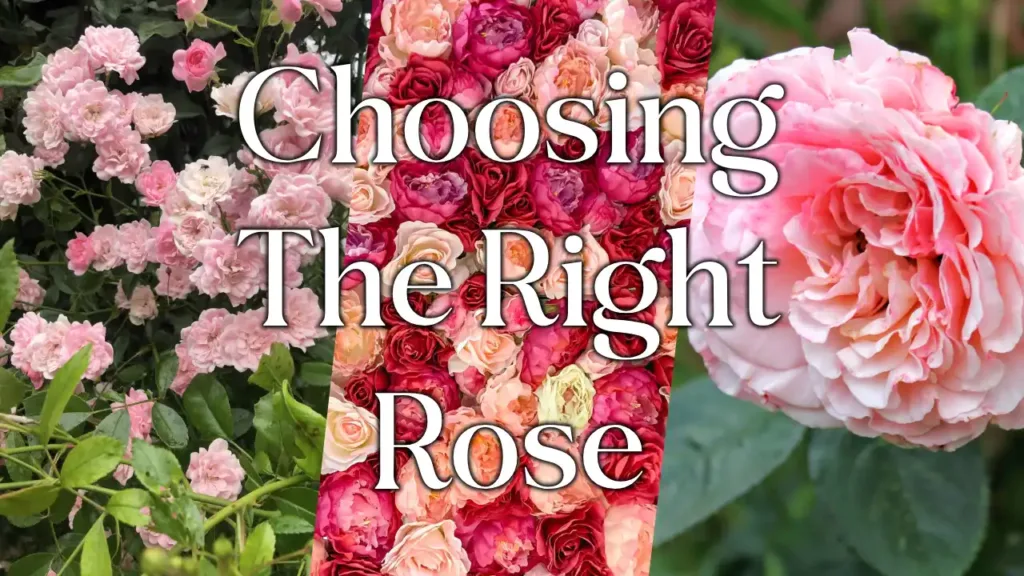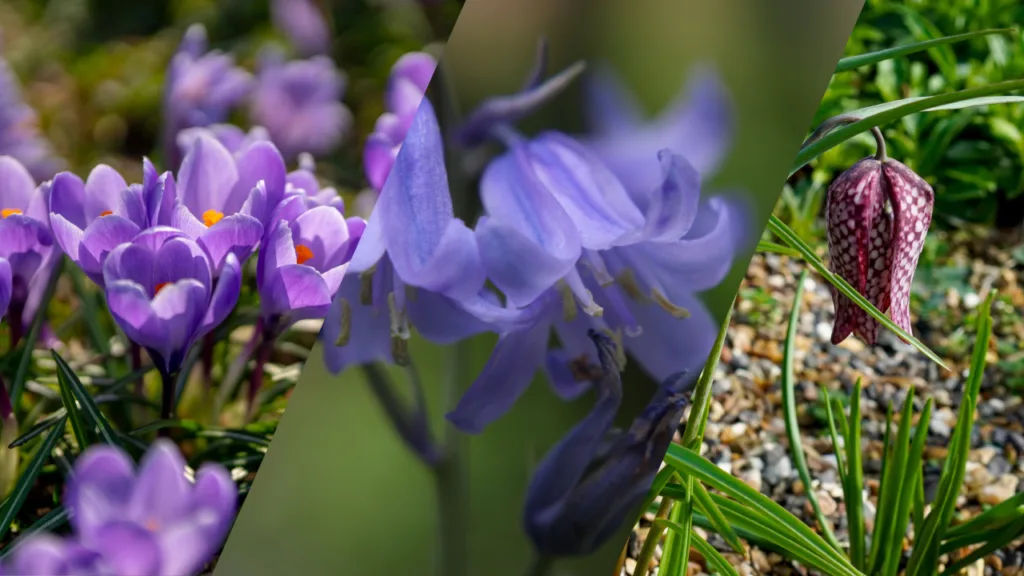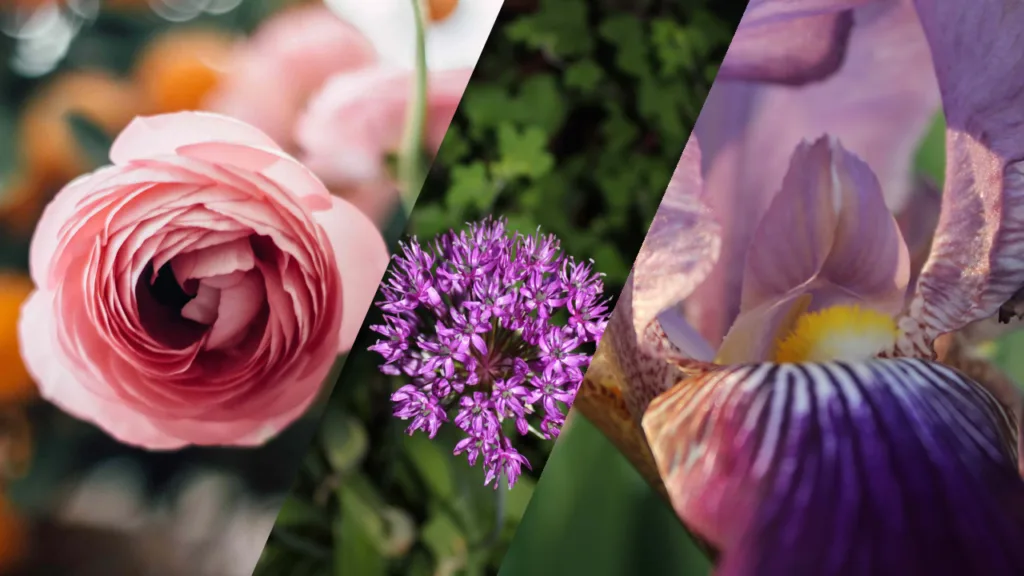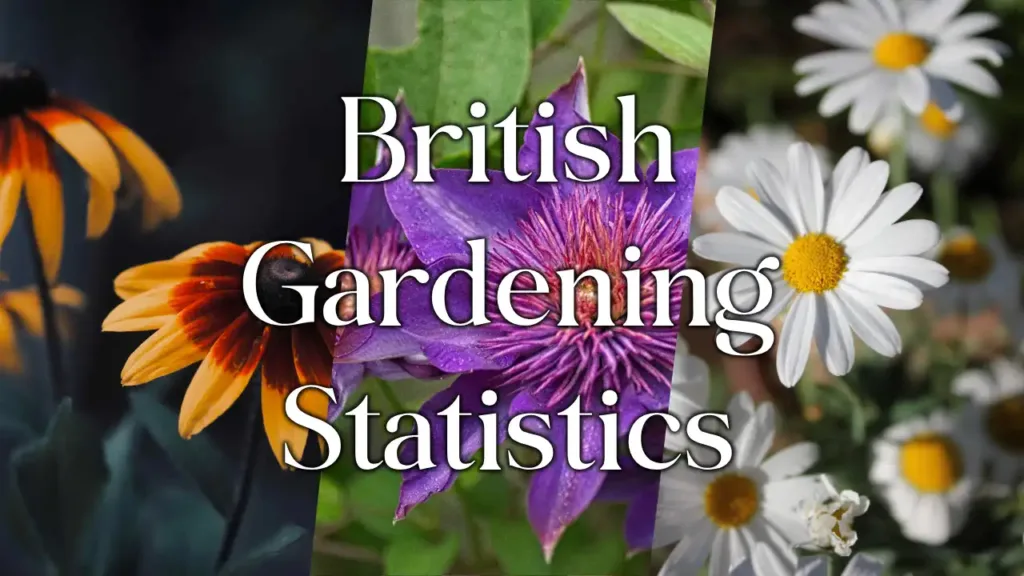Roses are a quintessential part of any garden, adding beauty, fragrance and elegance to your outdoor space. However, with over 30,000 varieties to choose from, finding the right rose that fits your garden can feel overwhelming.
At Our Country Garden, we have been collecting many stunning rose varieties over the years, so in this article, we’ll share exactly what to look out for when picking the perfect rose for your garden.
Contents
What To Consider When Choosing A Rose
There are 7 main things to think about when choosing a rose: its size, colour, flowering period, fragrance, soil type, location and disease. As size, colour and flowering period are the most exciting, let’s start with those first.
Size
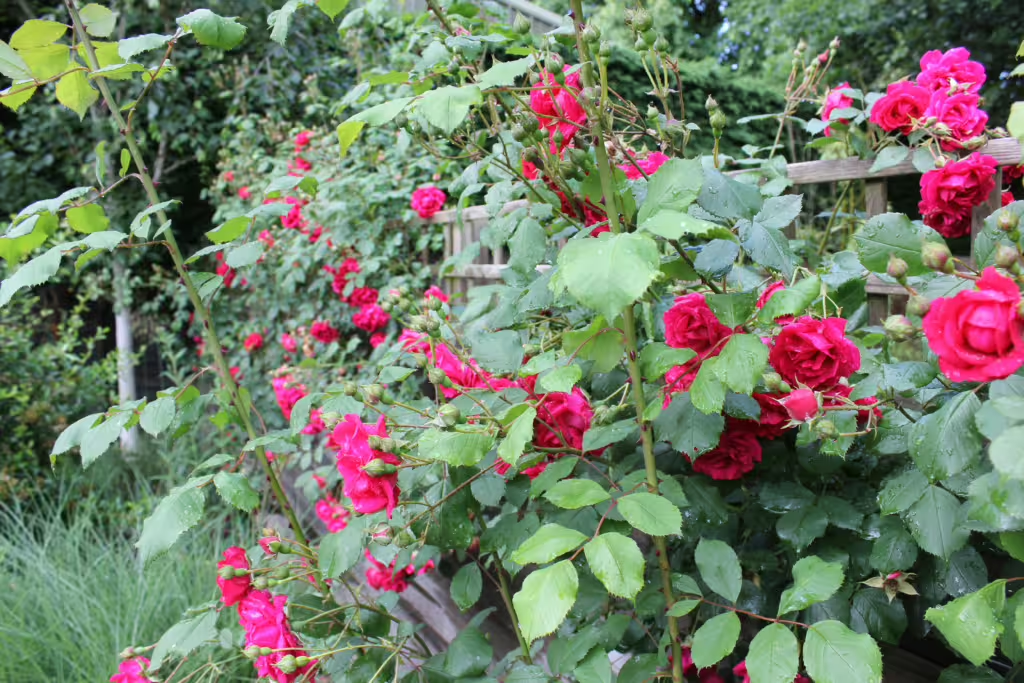
When choosing a rose, you need to think about how much space you have in your garden for it. Opting for a smaller rose often makes a space look more elegant, whereas larger roses can be great to hide ugly structures or add privacy to your space.
In general, different types of roses grow to different heights:
- Shrub Roses: 3 meters (10 feet) tall
- Small Bush Roses: Less than 1 meter (3 feet) tall
- Ground-Cover Roses: Less than 0.5 meter (1.5 feet) tall
- Tree Roses: 1 – 1.5 meter s(3-5 feet) tall
- Weeping Standard Roses: 1-2 meters (3-6 feet) tall
- Climbing Roses: 2-6 meters (6-20 feet) tall
- Rambling Roses: 3-12 meters (10-40 feet) tall
Colour
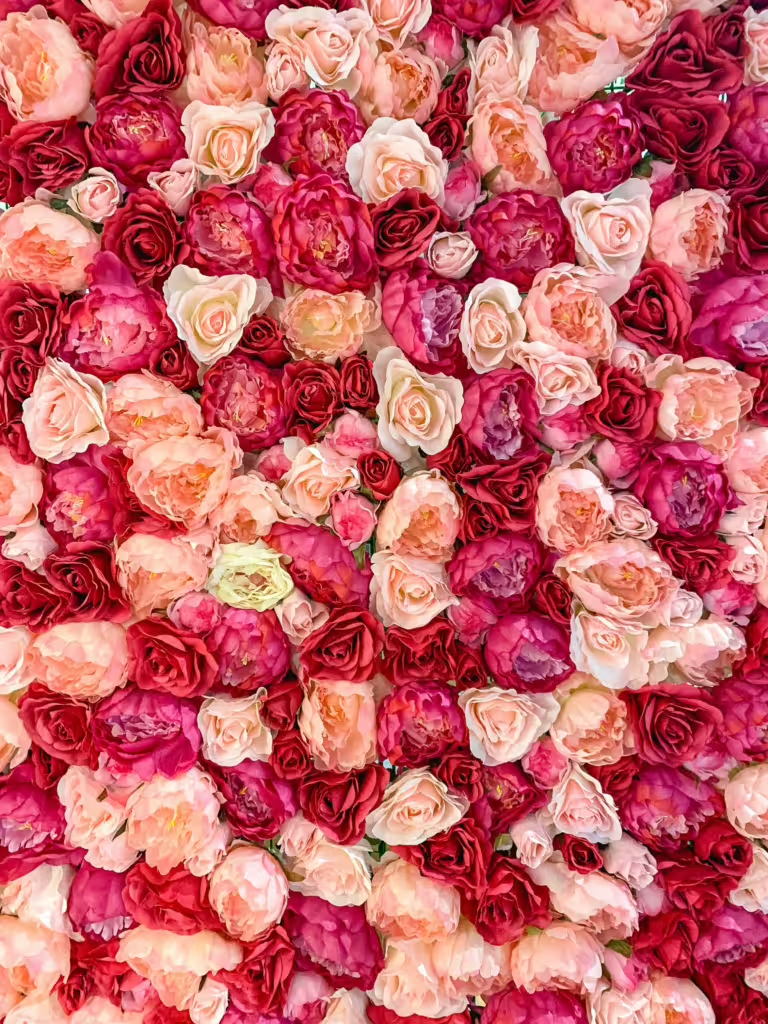
Next comes choosing the colour of your rose – the most exciting part for us! Roses come in almost every colour that you can imagine (except for blue). The choice of colour is largely up to personal preference, but from our experience the location that you’re going to plant your rose in should play a big part in your decision.
If you’re going to be planting your rose in a flower bed alongside other plants, we’d recommend choosing a colour that complements the surrounding plants. In our case, when we were choosing a rose to go in our new border, we selected a shade of pink that closely matched the cosmos and salvia that we had already planted there, which helped it to blend seamlessly into the space.
If you’re planting your rose as a stand alone plant, then we’d recommend going for a much brighter colour to draw people’s attention to it and make it a focal point in your garden.
Flowering Period
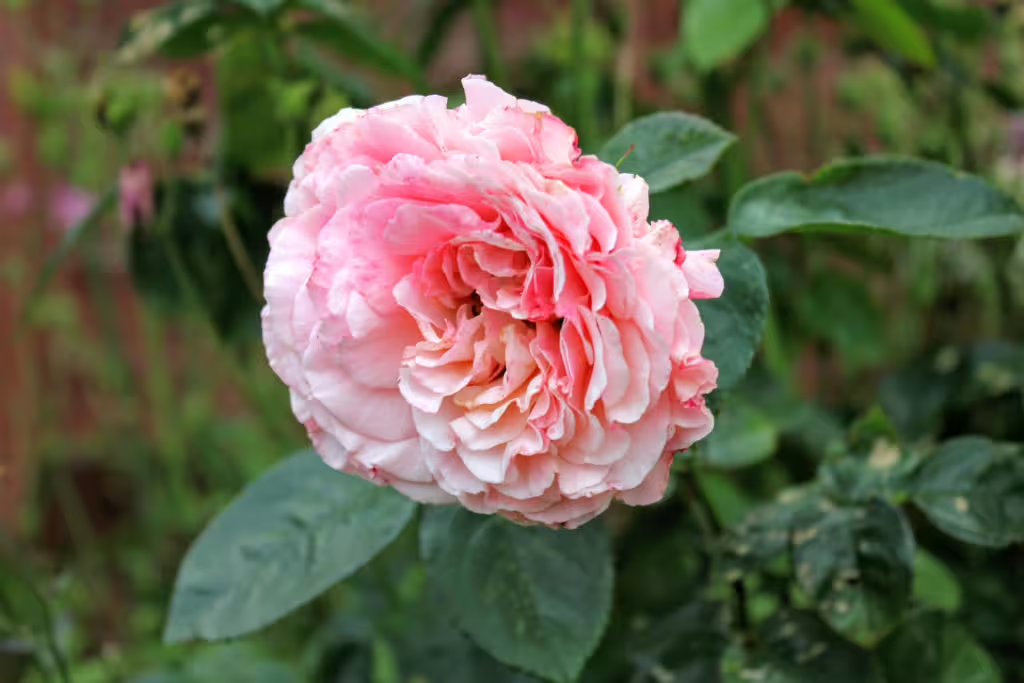
It’s important to choose roses that flower at the right time of year so that you get the right impact from your plants. If you’re planting your rose next to other plants, then we’d recommend that you look into their flowering times so that you can make a decision whether you have all of your plants flowering at the same time to create an abundant display of colour, or whether you separate the flowering times to keep your borders colourful throughout multiple seasons.
In general, roses can be split into the following categories based on their flowering period:
- Once-Flowering Roses: Flowers mid to late June for about five to six weeks
- Repeat-Flowering Roses: Flowers from the start in June and into autumn if regularly deadheaded
- Wild Roses: Flowers in early May, with some varieties producing rose hips in the autumn
- Continuous Flowering Varieties: Flowers all summer long if regularly deadheaded
Fragrance
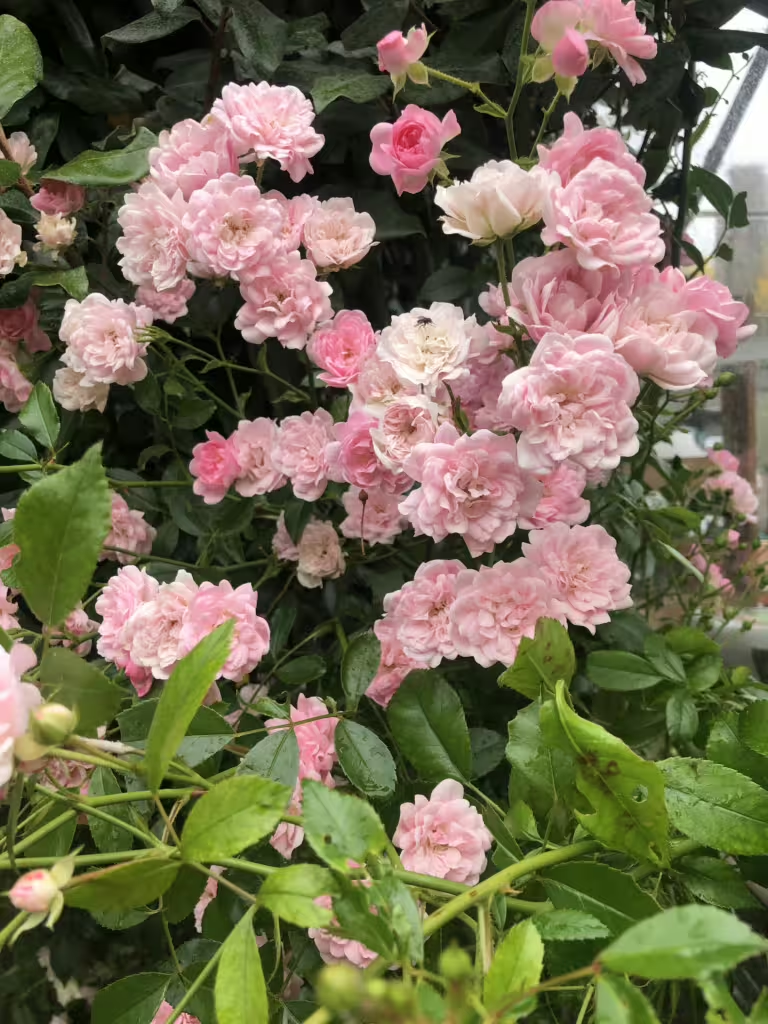
We always look for roses with beautiful smells when picking a new plant, as we love walking down our garden in summer and smelling their beautiful scents. If a good smelling rose is important for you, then we’d recommend choosing roses such as Rosa ‘St Ethelburga’ or Rosa ‘Compassion’ for their beautiful fragrance.
Soil
Roses thrive in deep, well-draining clay soils and really don’t like dense, waterlogged or nutrient-poor soil.
If your soil’s not quite right, then before planting we’d recommend that you dig a 50cm hole and fill it with good-quality soil from your local garden centre and feed your rose with a good quality feed at least once a year.
Location
Roses generally thrive in sunlight, needing about 5-6 hours of sun every day, although some varieties can tolerate slightly less. It’s also incredibly important that your rose received good air circulation to help prevent diseases.
Disease
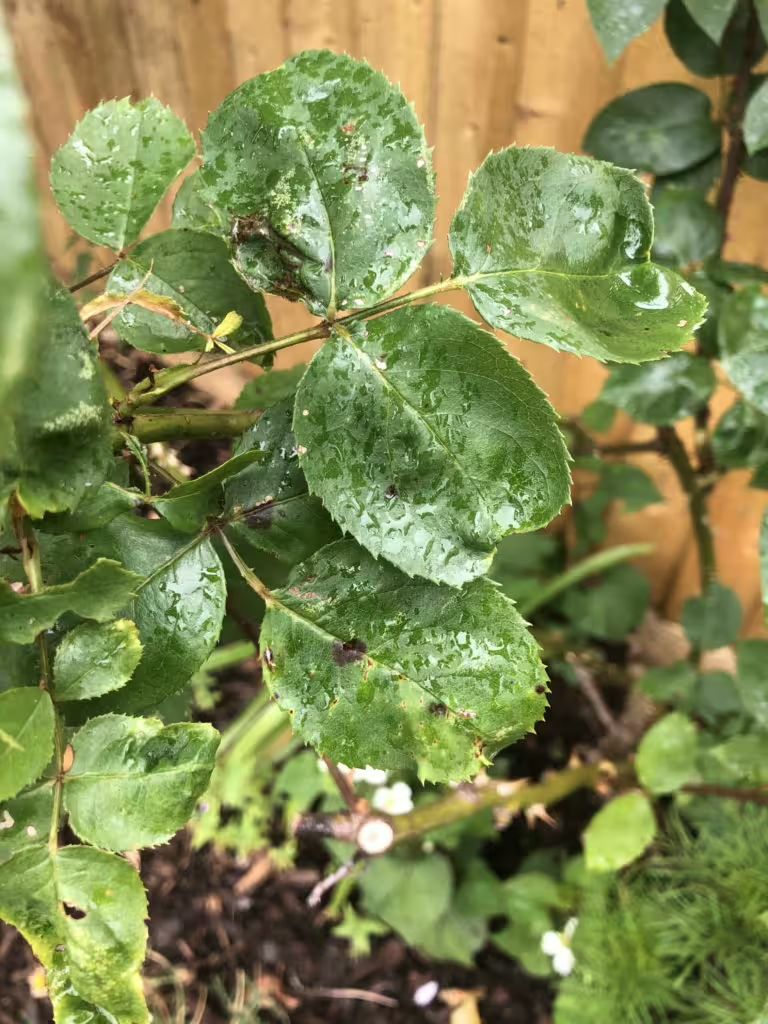
As most of us know, unfortunately roses can succumb to black spot, a type of fungal disease which makes black spots appear on the leaves, weakening them and impacting the plant’s growth. While you can try to treat black spot on your roses with hard cutting and sprays, which we had to do to some of our roses when we moved into our cottage, planting your roses in a well-ventilated location, or buying disease resistant variants are a must.
Container Garden Roses
If your outdoor space doesn’t have any soil, or if you’d prefer to grow your rose in a pot, then you’ll need to consider the size of your container and the amount of nutrients and watering that you’ll need to do.
From our experiences, most roses survive well in a pot as long as they’ve got enough space for their roots to grow. We’d recommend the following pot sizes for your rose.
- Small Bush or Ground-Cover Roses: At least 40 cm (16 inches) deep, 35 cm (14 inches) in diameter
- Miniature Roses: At least 30 cm (12 inches) deep, 30 cm (12 inches) in diameter
- Hybrid Tea Roses: At least 40 cm (16 inches) deep, 35 cm (14 inches) in diameter
- Compact Climbing Roses and Standard Tree Roses: At least 50 cm (20 inches) deep, 40 cm (16 inches) in diameter
As roses don’t like to be water logged, it’s important to make sure that you pot has an adequate drainage hole in the bottom. You’ll need to make sure to water your rose every few days to keep your plant healthy and give it at least 1 good feed per year.
Conclusion
So now you know what to look out for when picking a rose for your garden, it’s time for the fun part of buying them! If you’re looking to add some extra colour into your garden, take a look at our top 8 spring flowering bulbs. Alternatively, take a look at our complete guide to container gardening if you want more information on growing your roses in pots.

